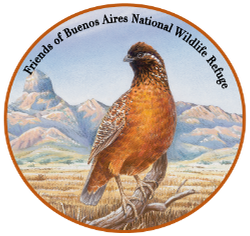Among Friends. 3 March 2021, Anna’s Hummingbird
by Walt Anderson
Like so many Arizona residents, the Anna’s Hummingbird came here first from southern California and decided to stay. The first newcomer to put down rootlets here nested in the Yuma area in 1962. Since then, it has spread widely in the state, especially common in residential areas with good flower beds and/or feeders. Most migrate south out of the highest, coldest locations in winter to southern Arizona and Sonora, but more are staying year-round where there are unfrozen feeders (such as in Prescott). At the same time, the species has spread northward into British Columbia. Climate change may make our deserts too hot for it in the future, but it is likely to expand its range north of the Mogollon Rim and east into New Mexico.

The male hummingbird’s throat (gorget) and crown flash rose-red or pink in good light but turn velvety black and various other colors when not reflecting light directly to our eye. These iridescent colors are structural, created by tiny discs filled with air bubbles on the barbules of the feathers. Males use this colorful display to impress females and intimidate rivals. It’s a red badge of courage.
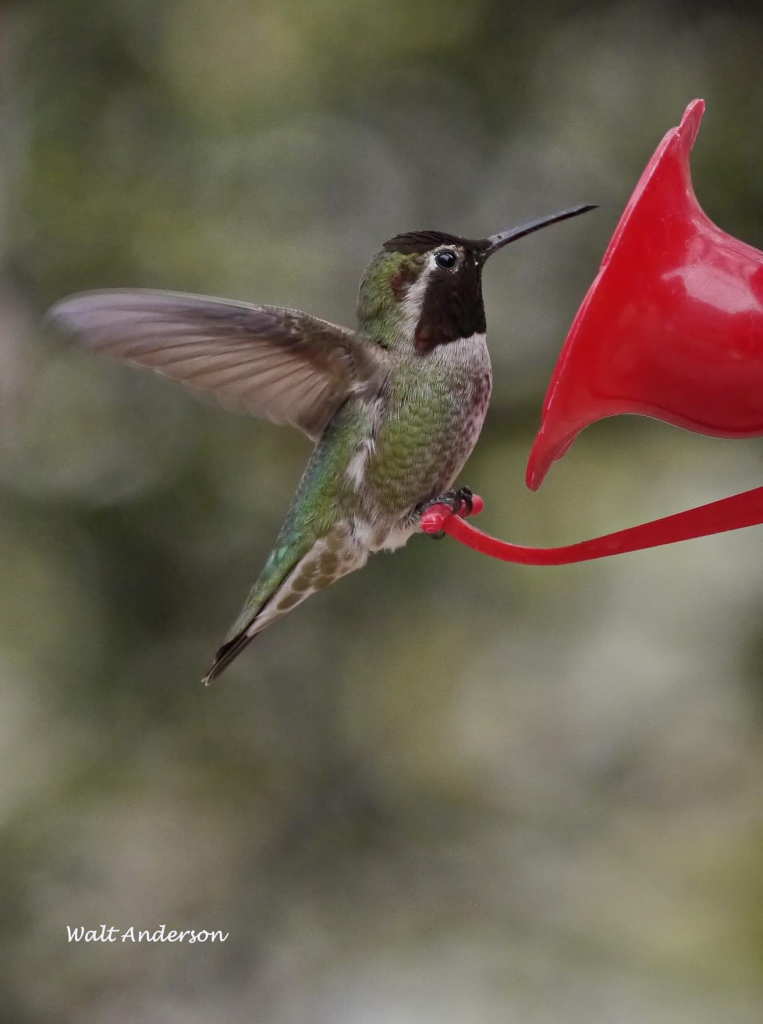
Hummingbirds are nectar-feeders, often attracted to the long tubular red or orange blossoms of flowers that co-evolved with them. Red works well to attract hummers to feeders, though the sugar solution (1 part sugar:4 parts water) should not contain color dyes, which can be harmful to them.
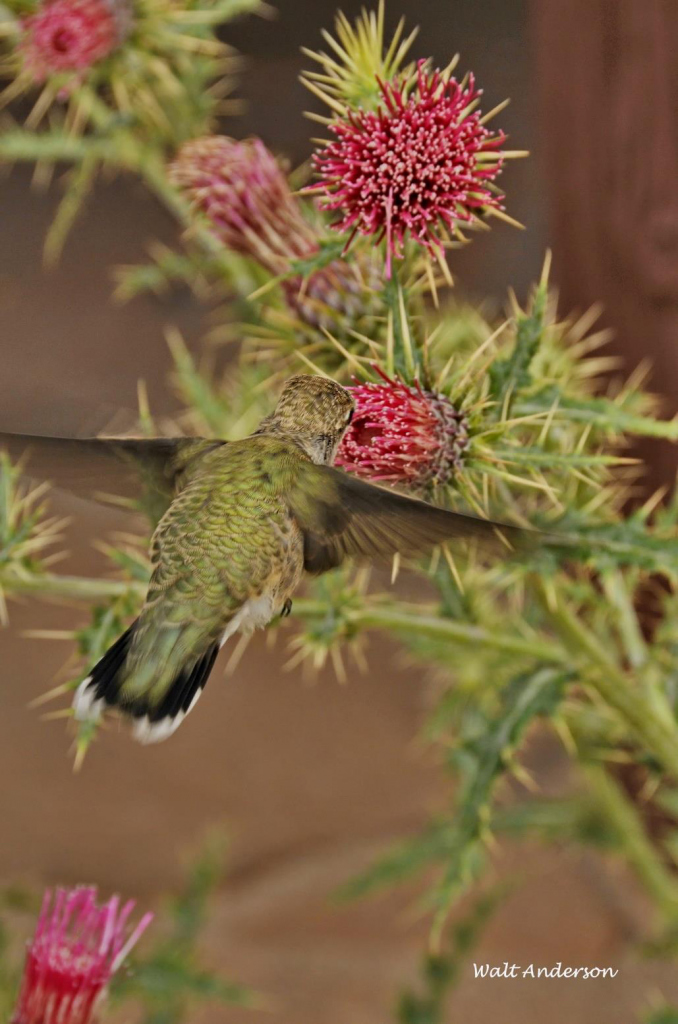
Red thistles are among the native plants that attract hummingbirds. A Spanish word for hummingbird is “chuparrosa,” which means “rose sucker,” though hummingbirds do not suck (in any sense of the word!). They actually lap nectar with tiny grooves running the length of the tongue creating capillary action that pulls the liquid right in. It takes a lot of energy to fuel these intense and tiny birds; at times they may consume 70% of their body weight in solid food per day, as well as 4 – 8 times their weight in water. Can you imagine a 100-pound human eating 70 pounds of chow and drinking 600 pounds of water in a day? Not even your fastest-growing teenager can do that. Hummingbirds also eat small spiders and insects for protein. When people say, “She eats like a bird,” they have no idea what they are saying!
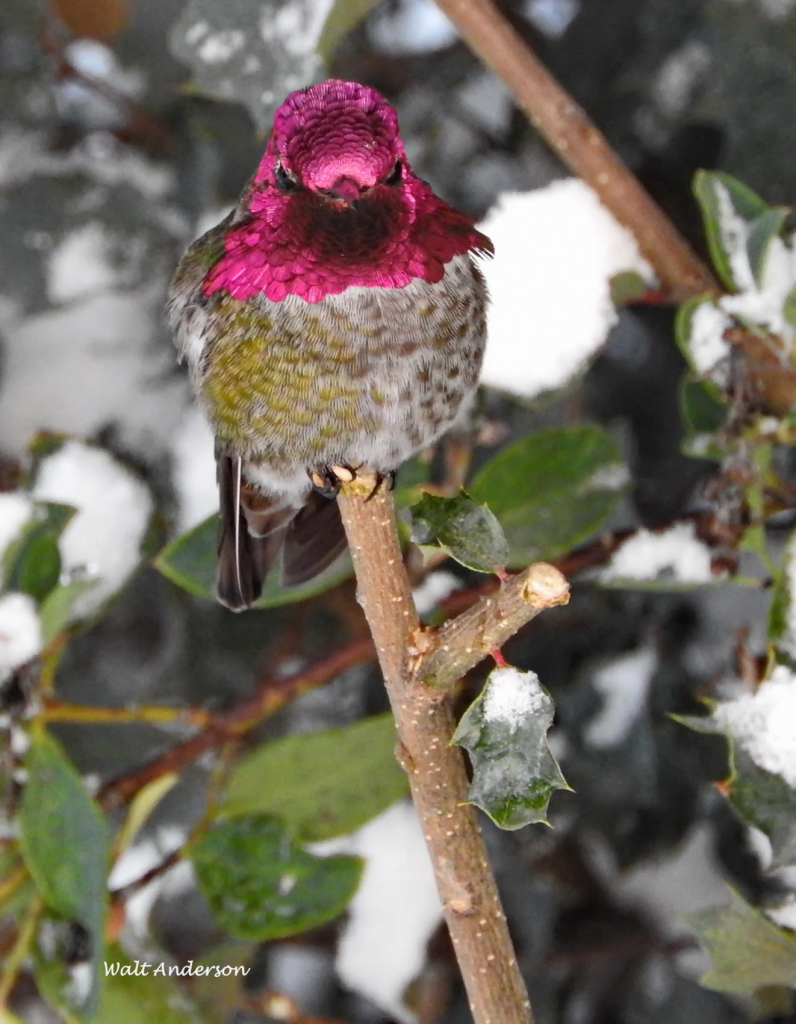
Given their high metabolic demands, it is astonishing that Anna’s Hummingbirds can make it through the winter in most of their range when feeders are available. On cold nights, they go into torpor, lowering body temperature and reducing heart rate dramatically. A hummer’s heart only beats 50 times/minute while in torpor. Non-torpor resting rate is 250 times/minute, and when flying or foraging, the hummer’s heart races at up to 1250 times/minute!
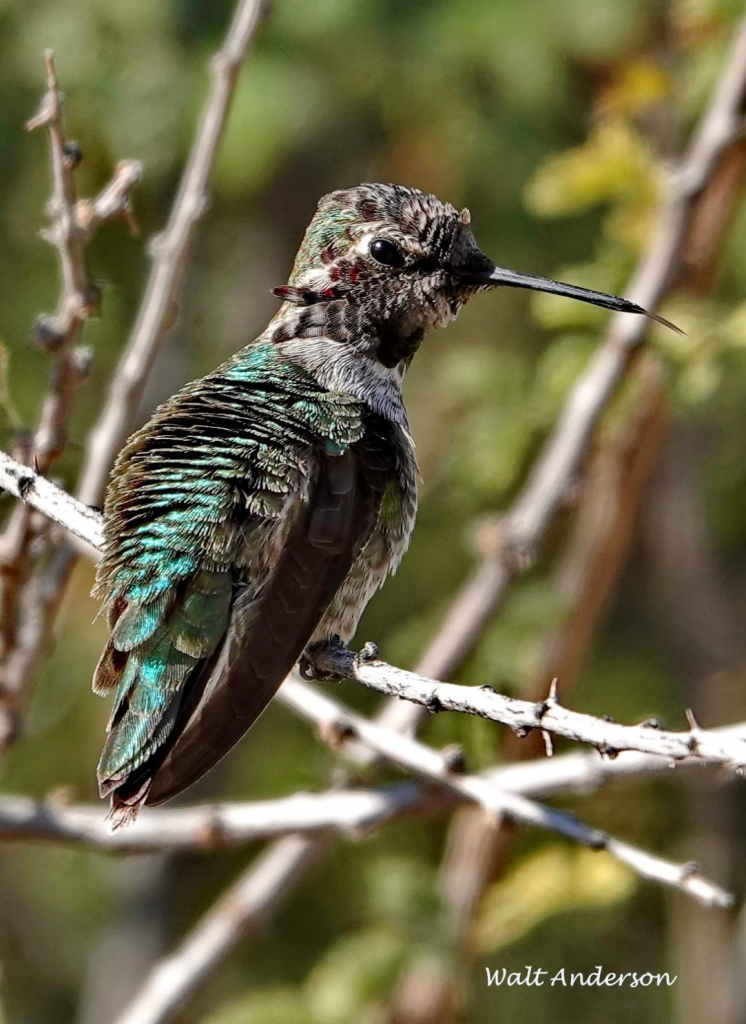
This individual looks disheveled, but it demonstrates how much control hummers have over their feathers. The smallest of all birds, hummers still have about a thousand feathers! The feathers shed raindrops perfectly and allow retaining or dissipating heat as needed. Those wings permit them to fly in any direction, hover, and power off at 60 miles per hour! These are truly super-birds, and we cannot forget that they are the smallest living dinosaurs.
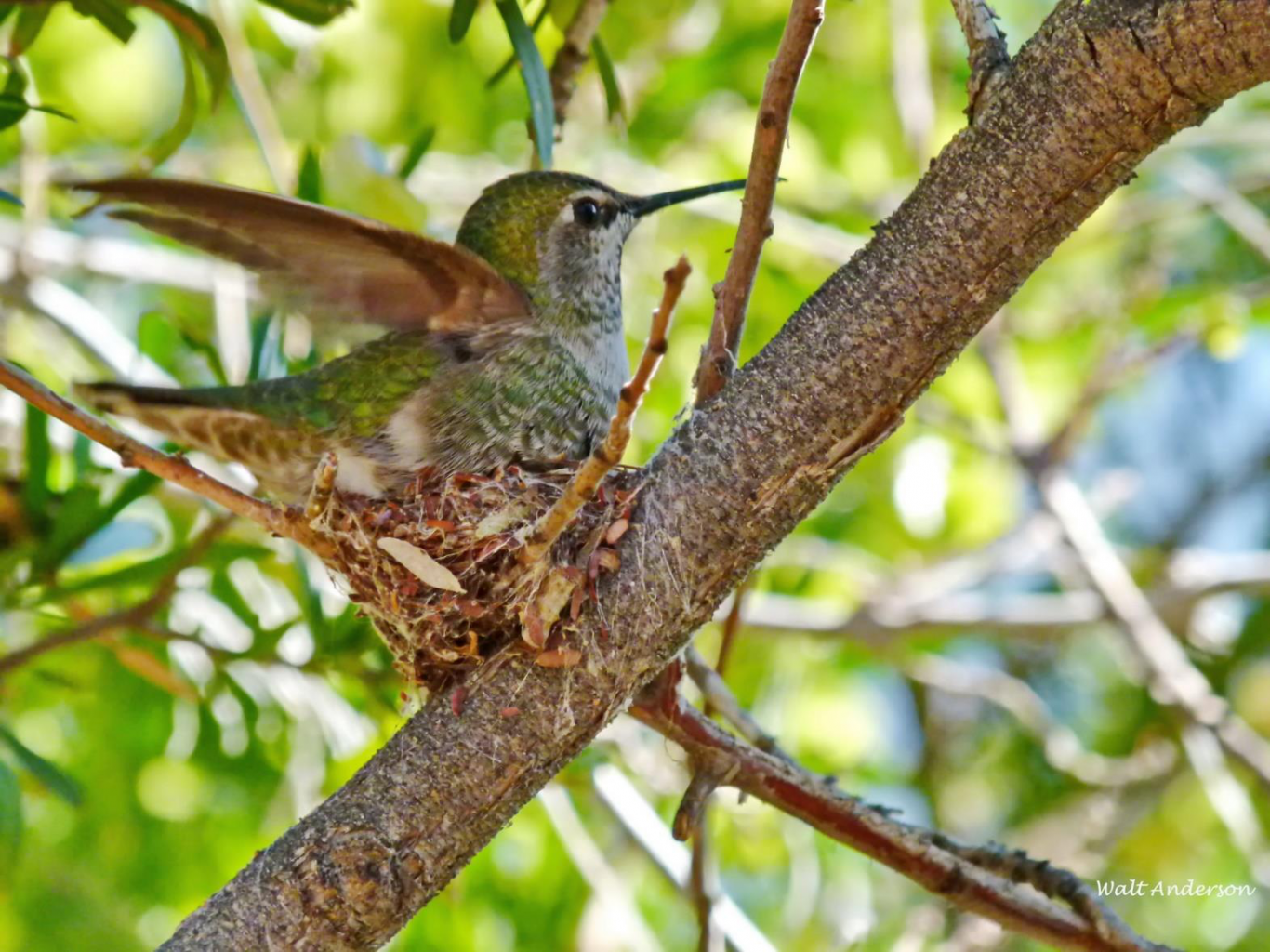
Hummingbird males and females maintain separate territories and are promiscuous, forming no permanent pair bonds. Females choose their territories based on good nest sites, while males choose theirs based on food resources that might attract the females to visit. Females do all the parental tasks (including, of course, laying the two eggs). Males are so busy displaying and being aggressive toward other males that they lose a significant amount of weight during the breeding season and have a shorter life expectancy than that of the females. The female builds a shallow cup nest of soft materials, often held together with spider web threads. The eggs are incubated for about a fortnight.
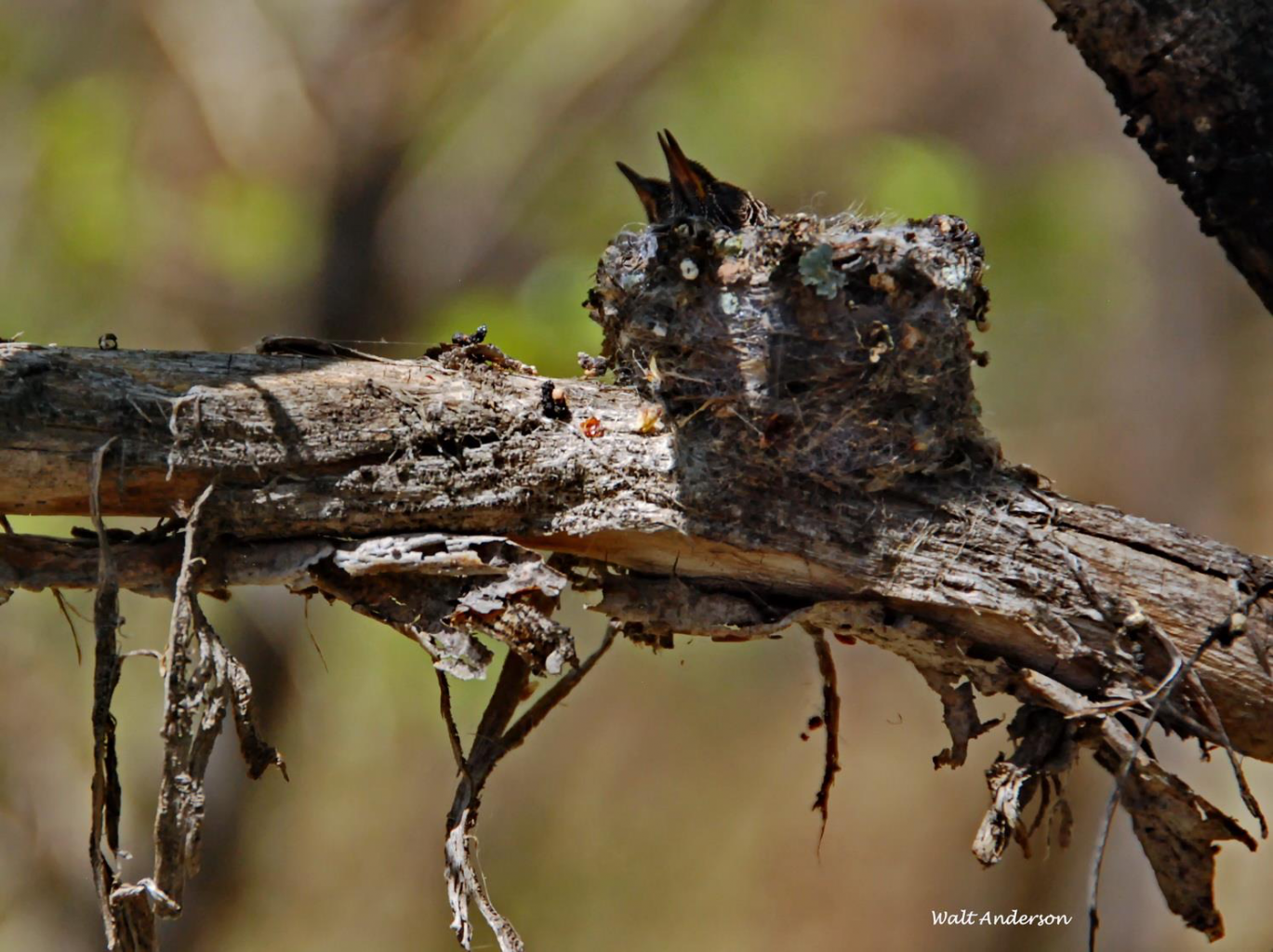
The nestlings are altricial, blind, naked, and helpless at first, but they grow quickly and often hang over the edges of the nest until fledging at about 3 weeks. That first year is challenging, and many don’t make it. Those that survive that first tough year have a life expectancy of 3 or 4 years, though rare individuals make it about twice that. This is life in the fast lane, for sure.
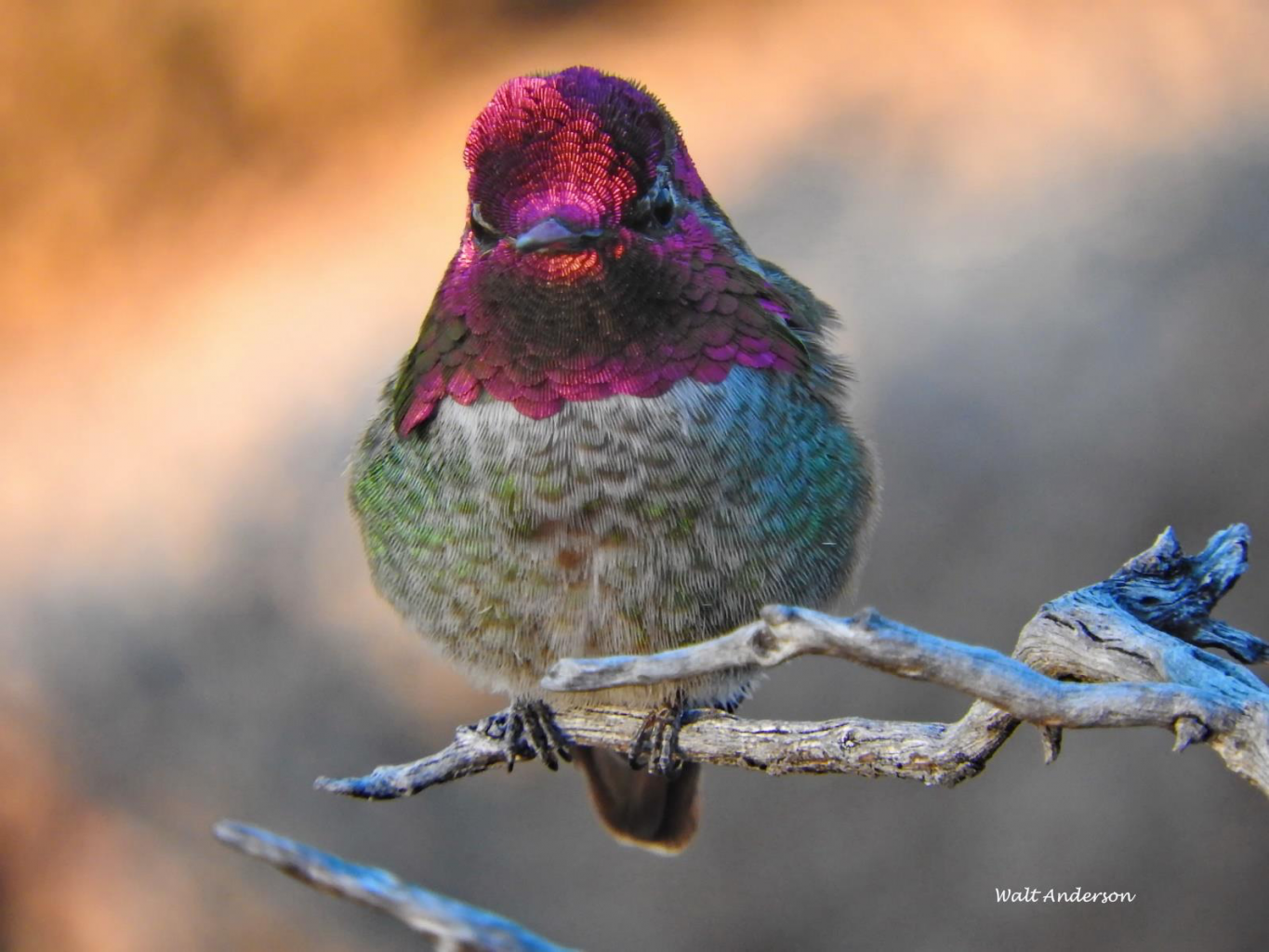
All 325 known species of hummingbirds live in the New World, far more in the tropics than in the boundaries of the United States. SE Arizona is the hummingbird diversity hotspot of the US. The Anna’s Hummingbird is thriving in the West with welcome subsidies of flower gardens and feeders, but the highly migratory Rufous Hummingbird appears to be declining. Major concerns for migratory species include drought and potential mismatch of flowering phenology (timing) as climate change messes things up. Cats and windows claim victims, and I have seen a roadrunner leap up and catch one in midair. As sensational as that is, roadrunners do not threaten hummingbird populations!
